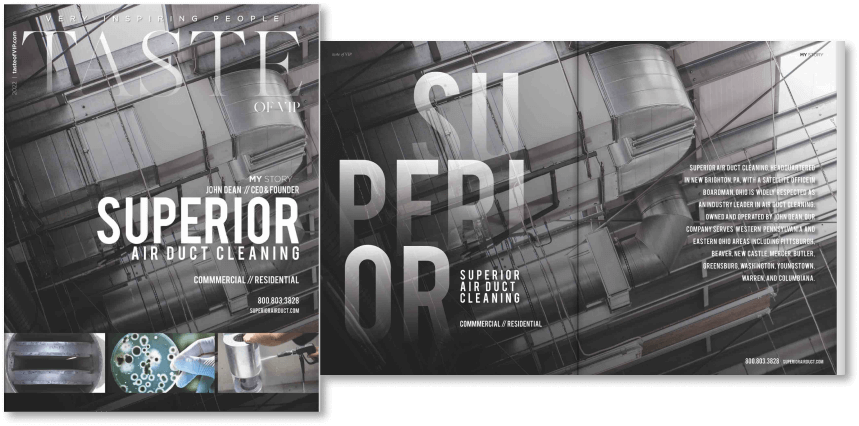Lint might seem harmless when you see it gather in your dryer’s filter, but what you can’t see behind the walls of your home or inside the long path of your dryer vent can be a bigger problem. For many homeowners in Youngstown, lint buildup in dryer vents is an issue that’s often overlooked. It’s out of sight, so it’s easy to forget. But when it’s ignored, it can quickly turn into a risk for your home and family.
A clogged dryer vent isn’t just a minor inconvenience. It can lead to decreased dryer performance, longer drying times, unpleasant odors, and, more seriously, fire hazards. By recognizing what causes lint buildup and addressing it early, homeowners can protect their homes and avoid unexpected breakdowns or safety issues. Taking care of your dryer vent is just another part of maintaining a safe and functional home in Youngstown.
Why Lint Buildup Occurs in Dryer Vents
Every time you run a load of laundry, your dryer works hard to push warm air and moisture through the vent system and out of the house. Along with that flow comes lint—tiny fibers from clothes that don’t all get caught in the lint trap. While some of it collects in the filter, a portion slips through and travels into the vent pipe.
Over time, lint starts to coat the inside of the vent. This buildup is often worse in homes where:
1. The dryer is located far from the exterior wall, meaning longer vent lines with multiple bends
2. The dryer vent hasn’t been cleaned in over a year
3. The lint trap or filter is damaged, clogged, or not properly maintained
4. The ductwork is made of a material that snags debris, like plastic or ribbed foil
The vent system plays a critical role in the dryer’s function by removing moisture and air from the drum. When those pathways are narrowed by lint, your dryer has to work harder. That can lead to the dryer overheating, internal parts wearing out faster, or even complete failure in some cases. More heat trapped inside the vent also increases the chances of lint catching fire.
One common example is a home in Youngstown where the dryer was on the second floor, and the vent traveled down two levels to exit through the basement wall. With so many turns and a longer pathway, lint built up quickly, slowing airflow and eventually triggering a burning smell during cycles. The homeowner didn’t realize the issue until clothes started taking over an hour to dry.
Potential Risks Of Lint Buildup in Youngstown Homes
Letting lint pile up inside your dryer vent might seem like a small deal, but the risks are real and often hidden until damage is already done.
Here are the main concerns:
1. Fire Hazard: Lint is highly flammable. Inside a clogged vent, where temperatures get hot and air doesn’t flow well, there’s a greater chance lint could ignite. In many cases, people don’t notice the signs until they smell smoke or spot scorch marks.
2. Reduced Air Quality: When vents are backed up, moisture and possibly mold can build up inside the system. Any trapped particles, fumes, or allergens could get pushed back into your home rather than outdoors. This can affect breathing or trigger allergies, especially for anyone with asthma or respiratory problems.
3. Higher Energy Bills and Appliance Damage: A dryer that can’t vent properly runs longer and hotter, which uses more electricity and wears out internal components faster. That puts more strain on your entire laundry routine and may shorten the lifespan of your dryer.
4. Long Drying Times: One of the first things homeowners notice is clothes taking longer to dry. You may find yourself restarting loads or emptying damp laundry that’s been tumbling for an hour or more.
By the time these signs show up, the vent may already be full of compacted lint. Regular care and attention can keep these risks to a minimum. It’s much easier and safer to address lint buildup before it causes more serious problems.
How to Prevent Lint Buildup in Dryer Vents
Keeping your dryer vent clear doesn’t take much effort, but it does require consistency. Many homeowners in Youngstown don’t realize buildup is happening until it’s already a hazard. With a few simple steps and some help from trained professionals, you can avoid vent problems and keep your system running smoothly year-round.
Here’s how to reduce the risk of dangerous lint buildup:
1. Clean the lint trap before or after every load. Skipping this step allows loose fibers to move straight into the vent.
2. Trim the vent hose length if the dryer is too far from the wall. Shorter, straighter runs improve airflow and prevent lint collection in corners.
3. Use rigid or semi-rigid ducting, not foil or plastic tubing, which tends to catch more debris and crushes easily.
4. Avoid pushing the dryer too close to the wall. Pinched hoses can stop proper airflow.
5. Schedule a vent inspection at least once a year. Experienced technicians can identify problem areas and remove lint safely.
6. Pay attention to warning signs like musty smells, long drying cycles, or unusually hot ductwork.
Dirty vents are hard to reach and often impossible to clean properly with household tools. Removing packed lint from inside long ducts requires special equipment. This is where trained professionals step in to ensure every section gets cleared with the right techniques and tools.
Why Professional Dryer Vent Cleaning Matters
Professional dryer vent cleaning isn’t about convenience. It’s about protection. Blockages, kinks, and deep buildup can create issues that home remedies won’t fix. If your vent hasn’t been cleaned in over a year or your dryer shows signs of strain, it’s best to bring in our professionals.
Our technicians are trained to clean every part of the vent line, including wall connectors, secondary traps, and behind units. This type of service reaches areas you won’t be able to access with a vacuum attachment. We use high-powered tools to safely remove stubborn lint and other debris without damaging the system or leaving behind residue.
A strong flush from start to finish clears the path so your dryer can run more efficiently. This reduces drying time and lowers the likelihood of overheating or failure. It also limits how much dust, dander, and moisture re-enter your living space through vent leaks or backdrafts.
For homeowners in Youngstown, this cleaning offers peace of mind. When vents are professionally cleared out, the entire system works the way it’s supposed to, allowing hot air and lint to exit without backing up into the home. You won’t need to guess whether your system is safe.
Ensure Your Dryer’s Safety and Efficiency in Youngstown
Ignoring lint buildup invites larger problems that don’t show up right away. Fires, poor air circulation, and costly repairs often begin with clogs deep inside the dryer vent. Regular inspections and thorough cleaning can help avoid these issues and keep your laundry area running without trouble.
In a place like Youngstown where homes vary in age and layout, dryer vent setups differ. Some systems run short and straight, while others snake through walls and basements. The more complex your layout, the more likely lint will pile up along the route. That’s why keeping your vent clean matters, no matter where the dryer sits in your home.
The good news is these problems are avoidable. Poor ventilation doesn’t have to be something you find out about after a breakdown or scare. With the right help and consistent upkeep, you can protect your home, keep your dryer working better, and improve safety for your family. Let experienced technicians do the hard-to-reach work, so you don’t have to.
To keep your home safer and your appliances running efficiently, trust Superior Air Duct Cleaning for expert dryer vent cleaning in Youngstown. Our professional service helps reduce fire risks, improves airflow, and extends the life of your dryer. For a quick estimate or to book a service visit, please contact us today.




